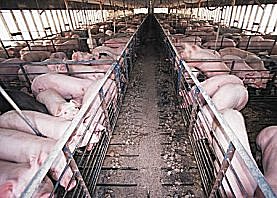Hoosier Environmental Council 2011-2012 Legislative Policy Guide
http://www.hecweb.org/wp-content/uploads/2010/12/2011LegGuide10-3.pdf
According to the 2010 Impaired Waters List, Indiana has more than 2,600 impaired waters that are unsafe for drinking and recreation.
The following is a summary of information presented in the guide regarding water issues:
Issue 1) Restriction unnecessary use of phosphorus in lawn fertilizers on turf grass unless it is TRULY needed. This is the first issue discussed because lawn fertilizer has been linked to “dead zones” in Lake Erie, where over 50% of our fish from the Great Lakes come from! (pg 4)
Issue 2) The Clean Water Act’s Anti-Degradation Policy was adopted by the Indiana General Assembly, but IDEM’s proposed rules do not meet this standard and must be improved. Too many exemptions allow companies to avoid justifying their new or increased discharges. There are several weaknesses in proposed rule so it needs to be strengthened. (pg 4)
Issue 3) Confined Feeding Animal Operations (CAFO’s) in Indiana number over 3,000. At 80% of these operations; hogs and dairy cows are confined by the thousands or chickens are raised by tens of thousands at a single facility. These large scale operations lead to public health disasters like fish kills, and Salmonella tainted eggs, blue-green algae blooms. The waste from these animals contain pathogens and medications that contaminate our waterways as well as food crops. Traditionally, animal waste is used to fertilize crops but at this magnitude land application is dictated by the need to get rid of the waste rather than necessary fertilizer. HEC believes that little is being done to effectively regulate the industry.
(pg 5)
Issue 4) Financial Assurance to Indiana Taxpayers. One example happened in 2009 – in Muncie, Indiana. 4-5 million gallons of manure was released and the State of Indiana paid the clean up cost associated with the defunct hog farm. The primary purpose is to ensure that funds will be available to protect human health and the environment in the event that the facility owners of operators are unable or fail to do so. (pg 5)
SUSTAINABLE agriculture builds food and fiber production systems that are both economically viable and protect or enhance the environmental quality of the agricultural lands. It also increases the quality of life for farmers and those people that live in the area surrounding the farms. (pg 5)



